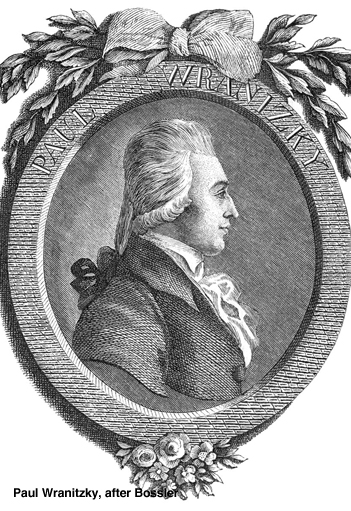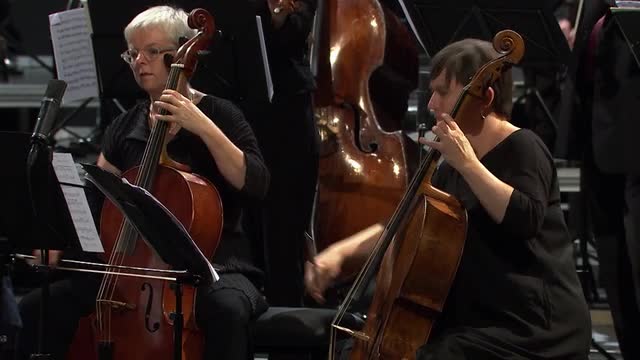
Paul Wranitzky (Pavel Vranický) was born in the southern Moravian village of Neureisch (today Nová Říše, Czech Republic) where he received his first musical training at the local Premonstratensian monastery. After studies in Jihlava and Olomouc, he moved to Vienna in 1776 to study theology at the university, where he also became director of music at the theological seminary.
In 1783 he became music director to Count Johann Baptist Esterházy of Galantha, an amateur oboist and distant relative to Haydn’s employer. Upon the count’s recommendation, Wranitzky joined the Viennese Masonic Lodge Zur gekrönten Hoffnung, for which he composed songs as well as symphonies. The composer Joseph Martin Kraus (1756–1792) was a visiting member at the lodge in 1783. Kraus, an already established composer, recognised Wranitzky’s budding compositional talent and provided encouragement and possibly some lessons. Several early publications also mention Wranitzky as a student of Haydn.
Wranitzky and Mozart became masonic brothers when three lodges merged in 1785. A concert given at the lodge on 15 December 1785 included two symphonies by Wranitzky, expressly written for the lodge, as well as a cantata, a piano concerto and improvisations by Mozart.
In 1785, Wranitzky became orchestra director at the Kärntnertortheater and two years later also at the Burgtheater. From the early 1790s until his death he would hold the position of first orchestra director for both court theatres.
Wranitzky’s first stage work, Oberon, König der Elfen, was premiered by Schikaneder’s troupe at the Theater auf der Wieden in 1789. Its success prompted Schikaneder to launch a series of fairy tale operas, with Mozart’s The Magic Flute from 1791 being the most well known today.
As secretary of the Tonkünstler-Societät from 1794 to 1807, Wranitzky revitalised the society, resolving a dispute regarding Haydn’s membership application and welcoming the celebrated master into the society with a glowing speech. Haydn reciprocated by insisting that Wranitzky lead the orchestra in the society’s profitable performances of The Creation. Wranitzky’s high regard as an orchestra leader is further attested by Beethoven requesting Wranitzky to premiere his First Symphony in 1800.
The imperial court favoured Wranitzky with commissions. He became a favourite composer of the Empress Marie Therese (1772–1807), for whose private concerts he served as concertmaster and provided exclusive compositions.
After his sudden death in 1808 his musical legacy was quickly overshadowed by his colleagues and friends Mozart, Haydn and Beethoven. Only in recent years has his music again begun to garner the attention it clearly deserves.
Compared to his exact contemporaries Mozart and Kraus, Wranitzky began his serious compositional activities late in life. While a sizeable body of canons and part songs for male voices were probably produced during his student years, the first datable instrumental compositions are from the early 1780s when he was already in his mid-twenties. However, he quickly made up for lost time and became a very productive composer, notwithstanding his busy rehearsal and performance schedule at the theatres.
While Wranitzky composed in most genres, symphonies seem to have held a special position in his creative interest as he produced them continuously during his career. Today 45 symphonies survive, making him one of the most prolific composers of his day in the genre. During the second half of the 1790s, Wranitzky was the most important symphonist in Vienna. It is therefore not surprising that many features of Wranitzky’s style are echoed in the early symphonies of Beethoven.
| Title | |
| BEETHOVEN, L. van: Beethoven and His Contemporaries, Vol. 1: Concert 2 (Berlin Akademie fur Alte Musik, Forck) | |

|
BEETHOVEN, L. van: Beethoven and His Contemporaries, Vol. 1: Concert 2 (Berlin Akademie fur Alte Musik, Forck)
Composers:
Beethoven, Ludwig van -- Mozart, Wolfgang Amadeus -- Wranitzky, Paul
Artists:
Berlin Akademie fur Alte Musik -- Forck, Bernhard
Label/Producer: Naxos |
